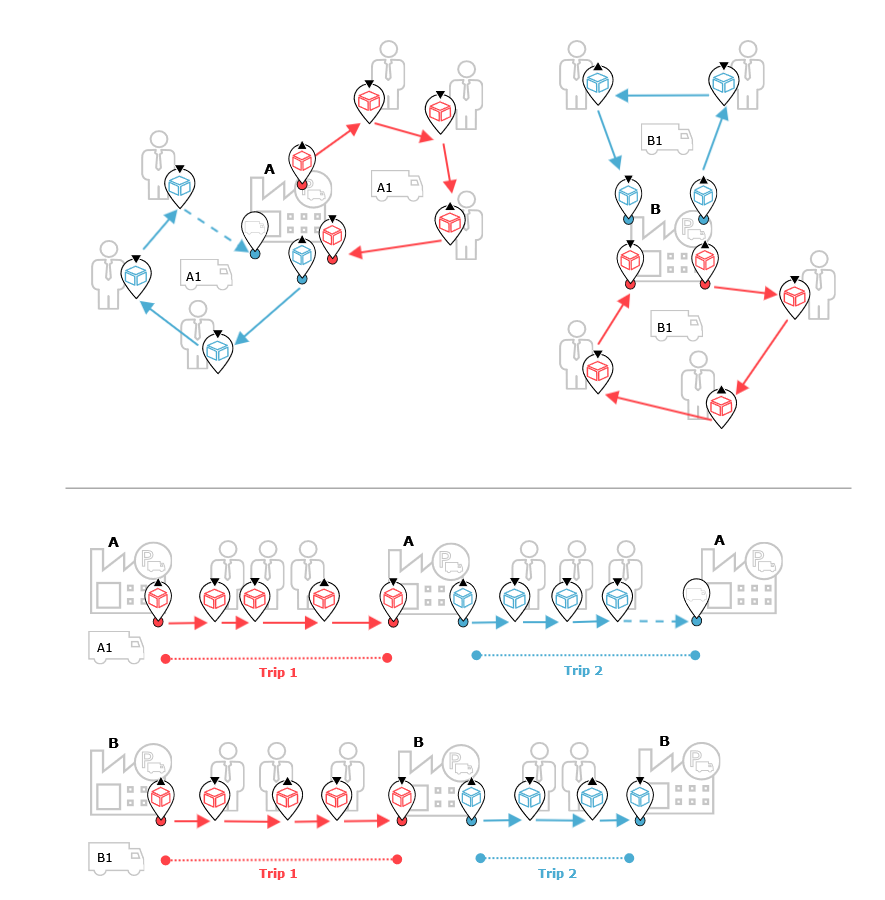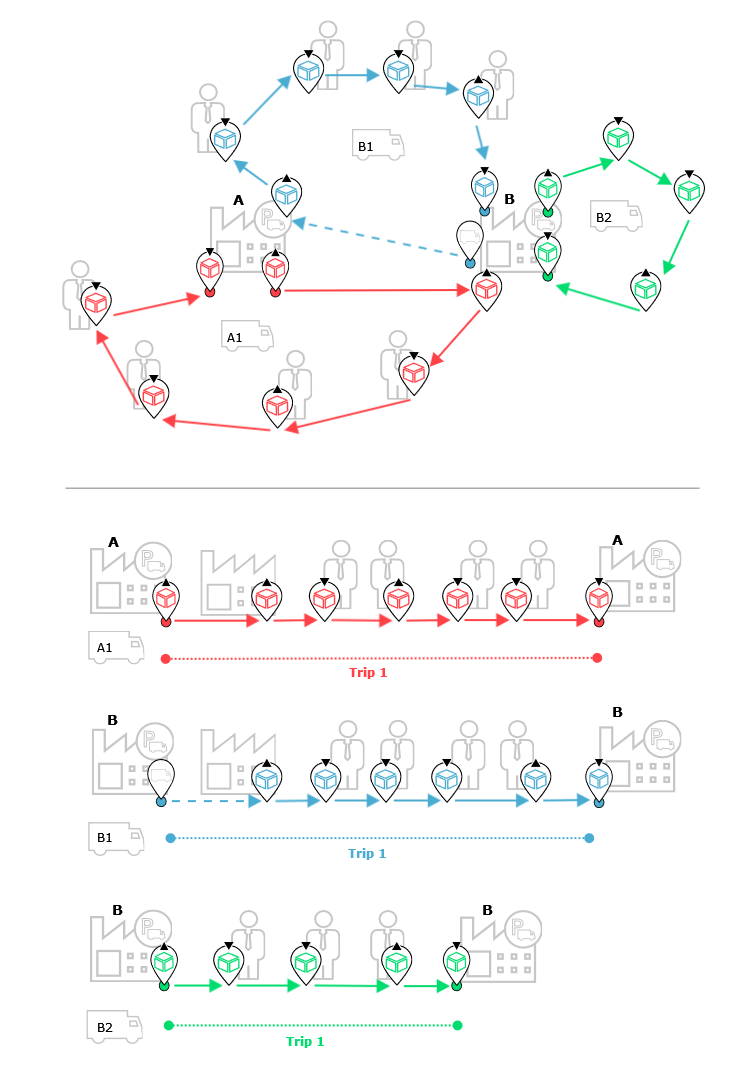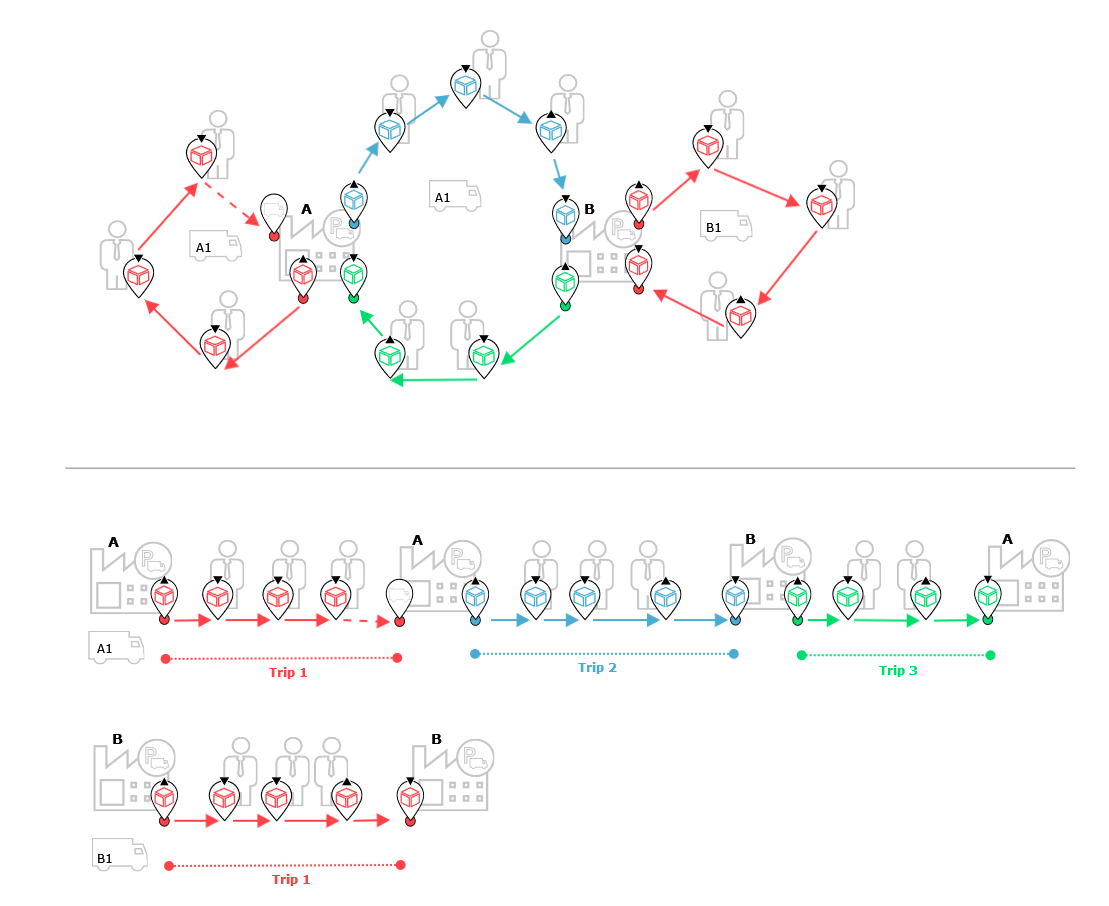The Route Optimisation service provides two main fields that allow a user to control the structure of the resulting routes for given input data. The two fields are part of the restrictions:
- singleTripPerRoute
Determines whether vehicles are allowed to drive multiple trips within a route (field set to false), or not (field set to true). - singleDepotPerRoute
Determines whether vehicles are allowed to approach multiple different depot locations within a route (field set to false), or not (field set to true).
The restriction singleTripPerRoute controls the permission of vehicle assignment to multiple trips. By applying singleTripPerRoute the Route Optimization algorithm will be forced to build routes consisting of one single trip only. Every available vehicle executes one trip at maximum. The default setting allows routes to consist of multiple trips and therefore leads to more efficient use of resources.
The restriction singleDepotPerRoute controls whether more than one depot location is allowed to be approached within a route. The default setting allows more efficient use of resources since a vehicle assignment is not limited to the transports of a single depot location. However, in some situations, this kind of restriction is useful to keep transports for different depot locations separated. This can be achieved by setting singleDepotPerRoute to true.
Note: When setting the restriction singleDepotPerRoute it may seem that two (or three) depot locations are contained in a route. This only happens if the vehicle's start and/or end location is a depot location. Because there are no transports carried out at the vehicle start and end location those depot locations are not part of the singleDepotPerRoute restriction.
The following figures illustrate possible resulting route plans depending on the route restriction settings of the algorithm. The initial situation shows the two depot locations "Depot A" and "Depot B". Each of those depot locations has two vehicles and a set of transports assigned to it:

singleDepotPerRoute/singleTripPerRoute
The setting singleDepotPerRoute/singleTripPerRoute ensures that each vehicle is assigned to only one trip at maximum. Furthermore, the transport referring to different depot locations are executed by different vehicles:

singleDepotPerRoute
With the singleDepotPerRoute setting, transports referring to different depot locations are strictly separated by the vehicles, which are used to process them. Vehicles are allowed to process multiple consecutive trips:

singleTripPerRoute
In the singleTripPerRoute setting, vehicles are restricted to one single trip each at maximum. However, multiple different depot locations are allowed to be served within the route:

No restrictions
There are no restrictions on the amount of trips within the route, or depot locations to be served by one vehicle:

The resulting route structure is affected by the type of given locations. Depot locations are subject to tighter restrictions compared to customer locations. Delivery at a depot location cannot be followed by any other task than a depot location delivery within the same trip. Otherwise, the current trip ends. When modeling for example a logistics hub which is approached multiple times within a trip, using a customer location instead of a depot location would make more sense.